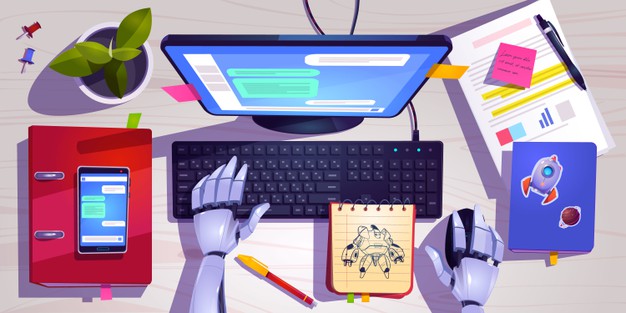Artificial intelligence in TSL and E-commerce – warehouses without employees and stores without cashiers
AI in TSL
Artificial intelligence is increasingly affecting the entire logistics industry. Innovations such as autonomous trucks and even intelligent roads will soon become part of our reality. Giants like Amazon are investing heavily in automating their processes (including supply networks). Experts estimate that the introduction of AI will save them up to 2 billion dollars a year.
An interesting example of using AI in warehouses is the British supermarket Ocado, which has successfully implemented a system based on the “hive-grid-machine” robot. The machine is able to handle up to 65,000 orders per week! The robot moves, sorts and arranges the goods in a chain store, which significantly affects the lead time. A Polish example of an autonomous warehouse is the facility owned by Amica, opened in 2017. At the time of its opening, it was the most modern white goods warehouse in the world. The facility houses about 220,000 pieces of equipment and is operated by one man, who has a branch of machines working 24 hours a day. The machines stack or retrieve 1600 pieces of equipment per hour from the shelves, which makes it possible to dispense 36 thousand and receive 30 thousand pieces of goods daily. It is impressive!
In the field of automated vehicles, there is still a lot of work. Despite the fact that it has been possible to create cars that travel along designated sections of the route on their own, man is still an indispensable part of the process. A human driver has to sit behind the wheel of a truck and ensure that the route is safe. Not only technology, but also regulations do not yet allow the full use of autonomous vehicles without human supervision.
One of the pioneers in implementing AI in transport services is the Swedish company DB Schenker. Since May 2019, the company has been using a T-pod vehicle, an autonomous fourth category truck. The truck uses the Nvidia Drive platform, which allows the system to process images in real time. A person sitting in a room hundreds of kilometers away controls up to 10 vehicles at once!
Since autonomous cars, there are also intelligent roads. What is the concept of connecting the road with AI? In short, to provide vehicles with maximum safety over long distances. A good example of such technology can be highways with LED lights powered by the sun. The panels provide electric power to the lights so that they can warn drivers about road conditions. Another application of AI on the roads are fiber optic sensors that detect the traffic volume and inform the relevant services about dangerous events.
Artificial intelligence in E-commerce
TOP3 solutions using artificial intelligence, which already help in the development of the e-commerce industry, are as follows:
1. chatbots and virtual assistants, which include interacting with customers, responding to simple voice commands and giving product recommendations.
2. intelligent logistics based on machine learning.
3. recommendation engines that analyze user behavior and use algorithms to prepare more tailored offers.
Let’s take a look at how the above solutions are used by the e-commerce giant, Amazon.
Amazon’s marketing strategy is based on algorithms driven by machine learning. Thanks to them, the store is able to predict what products will be liked by customers, and thus suggest the most appropriate choices. Amazon’s recommendation engine is responsible for 35 percent of total sales.
Some time ago, Jeff Bezos’ company launched a delivery system based on Prime Air drones. Flying robots are supposed to improve delivery performance and reduce shipping costs. The Prime Air drone debuted in December 2016 in the UK. The sky courier delivered a £5 package in 30 minutes without any problems. Work on improving this technology is still underway, but specialists say that a major breakthrough is not expected before 2025.
Another Amazon initiative using AI is the Amazon Go self-service store chain. Automated points that do not require a cashier or even self-service checkouts use deep learning technology, cameras and sensors. The latter track customer behavior by closely watching and analyzing when products are taken off the shelves or put back. The shopping process is very simple. The products land in a virtual customer basket, which is loaded after crossing the gateways through your Amazon Go account.
In February Bezosa opened an autonomous grocery store in Seattle. The store, with an area of 966 square meters, offers 5000 articles. By 2021, Amazon intends to open 3000 such outlets – some of them are to be even bigger than the one in the capital of grunge.
Machines like us

Analysis of the customer’s choices, the right choice of the suggested offer and prediction of their decisions – these are the main tasks facing artificial intelligence in the e-commerce industry. Even if scientists working for the biggest giants such as Amazon, AliExpress or E-Bay still have a lot of work to do, AI’s influence on our purchases can be sensed today.














